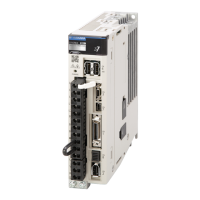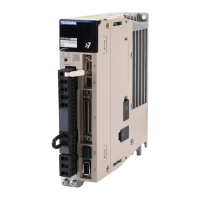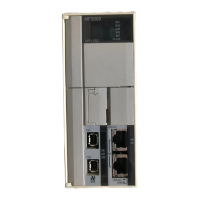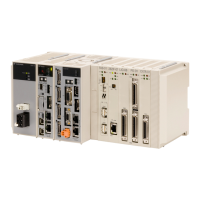6.1 I/O Signal Allocations
6.1.5 /WARN (Warning) Signal
6-9
ALO1 to ALO3 (Alarm Code) Signals
The ALO1 to ALO3 signals are allocated to the following output signal terminals (CN1) by
default.
You can allocate the ALO1 to ALO3 signals to connector pins other than those given above.
Refer to the following section for details.
6.1.2 Output Signal Allocations on page 6-6
6.1.5
/WARN (Warning) Signal
Both alarms and warnings are generated by the SERVOPACK. Alarms indicate errors in the
SERVOPACK for which operation must be stopped immediately. Warnings indicate situations
that may results in alarms but for which stopping operation is not yet necessary.
The /WARN (Warning) signal indicates that a condition exists that may result in an alarm.
Note: You must allocate the /WARN signal to use it. Use Pn50F = n.X (/WARN (Warning Output) Signal Allo-
cation) to allocate the signal to a connector pin. Refer to the following section for details.
6.1.2 Output Signal Allocations on page 6-6
Setting the Warning Code Output
You can use the ALO1 to ALO3 (Alarm Code Output) signals to output warning codes. Use
Pn001 = n.X (Warning Code Output Selection) to set the output.
Refer to the following sections for details on the warnings.
12.3.1 List of Warnings on page 12-45
Typ e Signal Name Pin No.
Output
ALO1
Alarm Code Output
CN1-37
ALO2 CN1-38
ALO3 CN1-39
SG Signal ground for alarm code output CN1-1
Typ e Signal Connector Pin No. Signal Status Meaning
Output /WARN Must be allocated.
ON (closed) Warning
OFF (open) Normal status
Parameter Description When Enabled Classification
Pn001
n.0
Output only alarm codes on the ALO1 to ALO3
terminals.
After restart Setup
n.1
Output both warning codes and alarm codes
on the ALO1 to ALO3 terminals. If there is an
alarm, the alarm code is output.
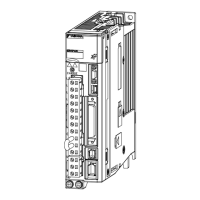
